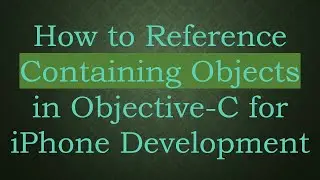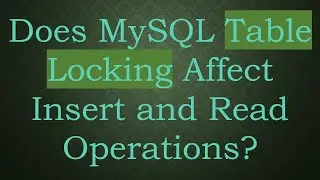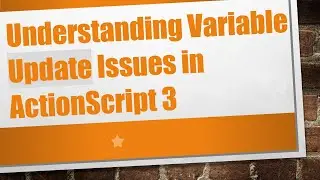How to Implement a Do Nothing Else Statement in Your Python Menu Program
на канале: vlogommentary
Learn how to effectively implement a 'do nothing' else statement in your Python menu program by using simple techniques to optimize your conditional logic.
---
Disclaimer/Disclosure - Portions of this content were created using Generative AI tools, which may result in inaccuracies or misleading information in the video. Please keep this in mind before making any decisions or taking any actions based on the content. If you have any concerns, don't hesitate to leave a comment. Thanks.
---
How to Implement a Do Nothing Else Statement in Your Python Menu Program
When writing a Python program, especially a menu-driven application, you may encounter a scenario where you need to execute certain code blocks based on user input. Often, you’ll use if-elif-else statements to handle the different conditions. However, there may be cases where you want to explicitly do nothing if none of the if or elif conditions are met. Let’s look at how you can achieve this.
The if-elif-else Structure in Python
Before we dive into the implementation, it’s beneficial to understand the basic structure of an if-elif-else block in Python:
[[See Video to Reveal this Text or Code Snippet]]
Usually, the else block contains code that executes when none of the conditions specified in the if or elif blocks are met. However, if you want the else part to do nothing, you can leverage Python’s pass statement.
Using the pass Statement
Python’s pass statement is a null operation; it does nothing when executed. It’s essentially a placeholder that you can use when a statement is required syntactically, but you don’t want any command or code to execute. Here is how you can implement a do nothing else statement in your Python program:
[[See Video to Reveal this Text or Code Snippet]]
In this example, if the user does not enter '1' or '2', the program will simply do nothing due to the pass statement in the else block.
Practical Example: Menu-Driven Application
Let’s consider a more practical example, like a simple menu-driven program to illustrate this approach:
[[See Video to Reveal this Text or Code Snippet]]
In this script, the user will be repeatedly prompted with the menu until they choose to exit by entering '3'. If they enter anything other than '1', '2', or '3', the program will simply pass over the else block without executing any code.
Why Use pass?
Clarity: The pass statement clearly indicates to anyone reading the code that you're intentionally leaving the block empty.
Syntax: It ensures syntactical correctness by providing a placeholder where a statement is required but no action is needed.
Future Development: It allows room for easy addition of statements in the future without altering the basic structure too much.
Conclusion
In summary, to implement a do nothing else statement in your Python menu program, you can use the pass statement. This technique is useful for maintaining clean, readable code and ensuring syntactic correctness. Next time you need an intentionally empty block, consider using pass for an elegant solution.































